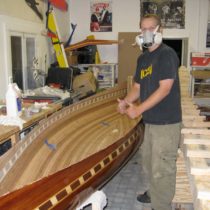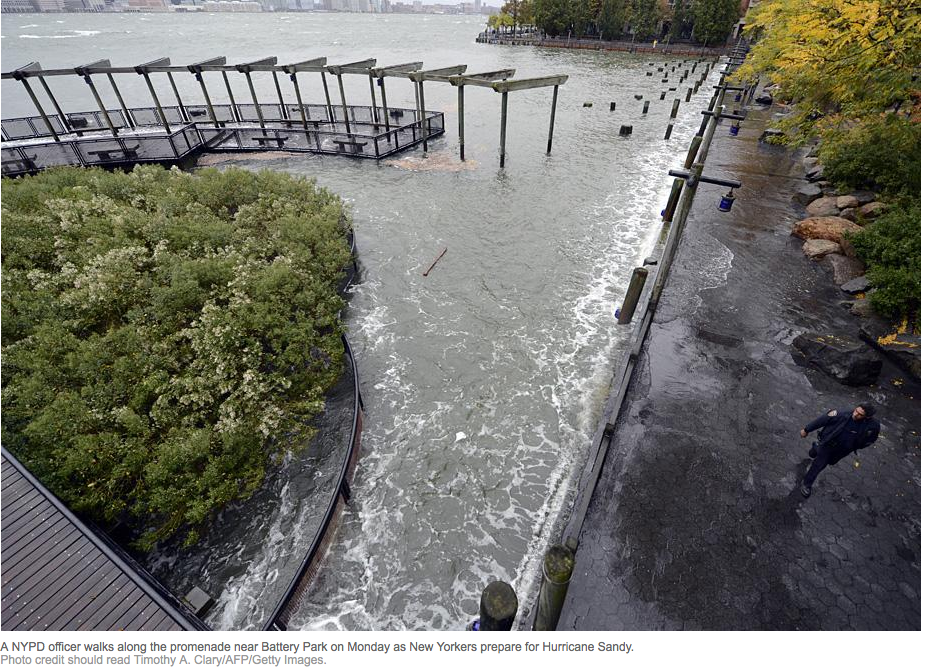Landscape Architecture for Landscape Architects › Forums › SUSTAINABILITY & DESIGN › Riverwalk design
- This topic has 1 reply, 6 voices, and was last updated 12 years, 3 months ago by
Tanya Olson.
-
AuthorPosts
-
January 16, 2013 at 11:50 pm #155682
 Stephen LoveringParticipant
Stephen LoveringParticipantI have recently been given the chance to design a riverwalk along the side of the Bow River in Calgary, Canada. We are faced with a couple of issues when designing these, one being the river completely ices over for possibly 3 months of the year and another being the ice builds up into huge “ice berg” like forms which could potentially wreck any installation. Ideally i would like the walkway to protrude out into the river, has anybody got any ideas/information on existing riverwalk installations that inspire??? Any that deal with ice/harsh climates would be a bonus!!!
Thanks Steve
January 17, 2013 at 4:20 am #155689Tanya Olson
ParticipantCheck the lakewalk in Duluth, MN. Giant sheets of lake ice pile up against the shore there, so I think they used a particular design strategy that dealt with that. I think they also used Ipe or some other tropical hardwood that has weathered very well. No handrails or guardrails. Similar in harsh weather and very active ice.
Still could be helpful if you can find out anything about the design or designer. Some articles say Kent Worley, a Duluth landscape architect, but I thought a Minneapolis firm did the design…hope this isn’t a wild goose chase!
January 17, 2013 at 2:21 pm #155688 Ben YahrParticipant
Ben YahrParticipantIce forces are quite amazing. I would suggest that you will probably need specialized engineering to ensure the longevity of your installation.
Check out Harriet Island in St. Paul. In addition to ice, the design reacts to huge fluctuations in water level.
http://www.aerial-xp.com/vr_flash/st_paul_riverfront/node_d.html
January 17, 2013 at 11:58 pm #155687 Elizabeth FowlerParticipantJanuary 18, 2013 at 2:58 pm #155686
Elizabeth FowlerParticipantJanuary 18, 2013 at 2:58 pm #155686 Stephen LoveringParticipant
Stephen LoveringParticipantThank you everyone for your suggestions, i am looking into them as we speak!!!!
August 20, 2013 at 6:13 pm #155685 Brian LotzParticipant
Brian LotzParticipantSteve,
Timber Holdings USA supplied the materials for Duluth Lakewalk, Hudson River Park, Milwaukee Riverwalk, Strawberry Plains Audubon, Beidler Forest Audubon and the list goes on.
Our experience in boardwalk designs and specification assistance is unsurpassed as is our environmental record.
We are currently supplying the Long Beach Boardwalk reconstruction.
Please visit us at http://www.ironwoods.com or contact me directly at 414-750-2336. brian@ironwoods.com
I would be pleased to assist as a resource to you or any other designers considering the use of naturally durable wood products or wood based composites.
Respectfully,
Brian Lotz
August 21, 2013 at 3:46 am #155684 Goustan BODINParticipant
Goustan BODINParticipantJust would like to attract attention on tropical hardwoods for a minute : most are now rare, very expensive, and a large proportion come from illegal logging that destroy the few natural forests left on this planet.
Due to deforestation *and* transportation their carbon footprint is terrible.
So their specific qualities (durability, beauty, anti-fungi properties) come in very handy, but please take a minute balancing the different factors before specifying them anywhere.
August 21, 2013 at 8:13 pm #155683 Brian LotzParticipant
Brian LotzParticipantI am pleased to have attention drawn to Tropical Hardwoods.
The United Nations (CITES) The Convention On The International Trade Of Endangered Species regulates what species are considered rare or endangered.
For those of you unfamiliar with the LACEY ACT, the U.S. Government implemented a federal law making it a federal crime to trade in illegally harvested wood products. Punishable by $500,000 fines and 5 years in prison with no corporate veil of protection. This law has more teeth than the FSC.
I would also suggest you google rainforests mongabay and take a look at deforestation graphs.
You will note that logging legal and illegal combined account for less than 3% of tropical deforestation rates. You will also note that deforestation is at its lowest rate over the last two decades and continuing to decline while wood usage has increased.
Species like ipe find their value in exterior applications for which their durability is proven. This is a very small segment of the wood markets compared with flooring, plywood production and other wood products for which these extremely dense species are not well suited.
I understand that this is an emotional issue, but designers have the responsibility to separate perception from the scientific data available.
If we are not to use wood, what are we to replace wood with, and is that product more or less environmentally benign?
This is a discussion worth having within the design community.
-
AuthorPosts
- You must be logged in to reply to this topic.



